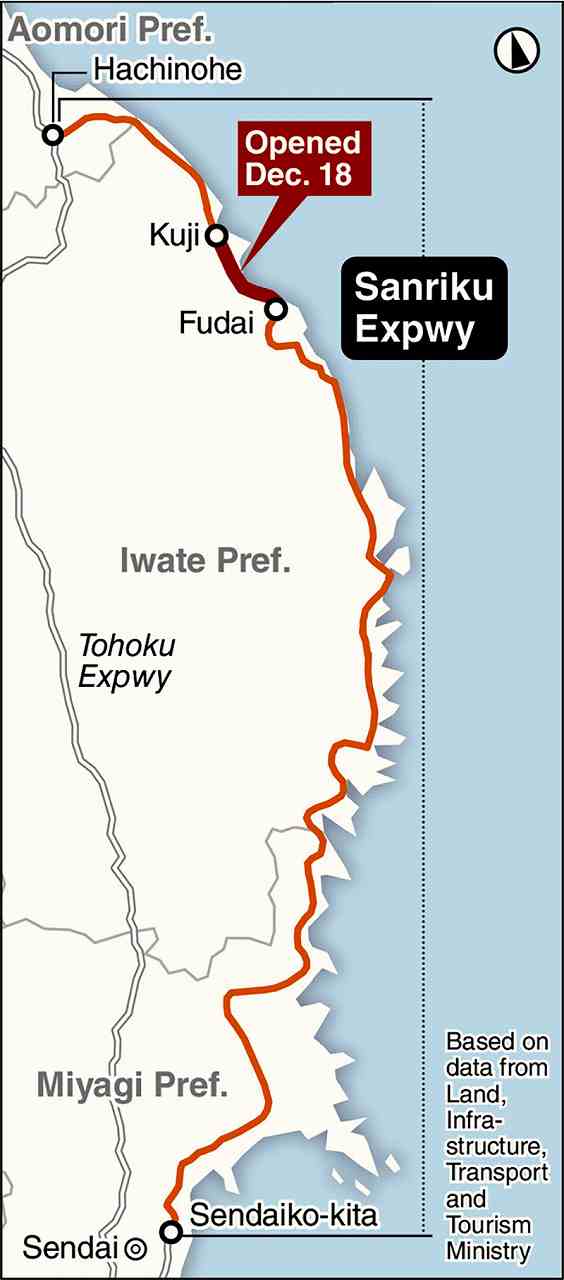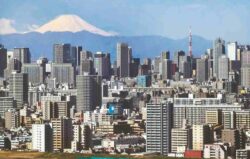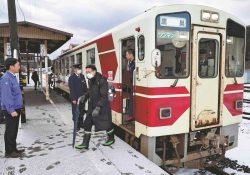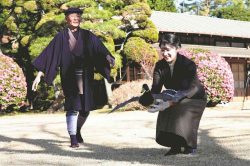
18:15 JST, December 18, 2021
Kuji, Iwate (Jiji Press)—The entire route of an expressway running along the Sanriku Pacific coast in northeastern Japan, built by the Japanese government as a road embodying the region’s reconstruction from the March 2011 earthquake and tsunami, opened on Saturday.
With the full opening of the Sanriku coastal expressway running between Sendai, the capital of Miyagi Prefecture, and the city of Hachinohe in Aomori Prefecture, the northeastern Japan region now has a road traffic network measuring around 570 kilometers, including four “reconstruction support roads” connecting areas facing the Pacific Ocean and inland areas in Iwate, Miyagi and Fukushima prefectures.
Many hope that the newly completed expressway, which runs for a total distance of around 359 kilometers, will lead to regional revitalization in terms of logistics and tourism, in addition to being utilized for relief activities in times of disaster.
A section connecting the village of Fudai and the city of Kuji, both in Iwate Prefecture, which had yet to be opened to traffic, was put into service on Saturday.
An opening ceremony was held in Kuji ahead of the section’s opening.
The expressway will “offer a strong support for reconstruction efforts as it will be used for regional revitalization and tourism promotion, as well as for emergency evacuation, goods transportation and rescue activities during disasters,” infrastructure minister Tetsuo Saito said at the event.
Iwate Governor Takuya Tasso said that the Sanriku area is now united thanks to the new expressway and the reconstruction support roads have connected the coastal and inland areas.
The full opening of the expressway “will go down in history as an event that united Iwate Prefecture and connected it with the rest of Japan and the world,” the governor added.
Drivers can use the entire expressway free of charge, with the exception of some sections.
While it took eight hours and 35 minutes to travel between Hachinohe and Sendai via the coastal area before the 2011 disaster, the travel time has been drastically reduced to five hours and 13 minutes thanks to the full opening of the expressway.
The expressway is expected to help ensure a smooth transportation of goods not only within the coastal area but also between the region and other parts of the country.
Although a plan to build a road running through the Sanriku coastal area was put into operation in some sections in 1974, the roads were not completely connected.
Following the 2011 disaster, the central government decided to build the entire route of the coastal expressway as a reconstruction road, which was finally completed after 10 years.
The construction of the expressway and the reconstruction support roads cost the country a total of around ¥2.2 trillion, including expenses for sections that had opened before the disaster.
"Society" POPULAR ARTICLE
-

M4.9 Earthquake Hits Tokyo, Neighboring Prefectures
-

M7.5 Earthquake Hits Northern Japan; Tsunami Waves Observed in Hokkaido, Aomori and Iwate Prefectures
-

Tsukiji Market Urges Tourists to Avoid Visiting in Year-End
-

Israeli Tourists Refused Accommodation at Hotel in Japan’s Nagano Pref., Prompting Protest by Israeli Embassy and Probe by Prefecture
-

Beloved Cat Stationmaster Nitama in Wakayama Pref. Passes Away at 15
JN ACCESS RANKING
-

Keidanren Chairman Yoshinobu Tsutsui Visits Kashiwazaki-Kariwa Nuclear Power Plant; Inspects New Emergency Safety System
-

Imports of Rare Earths from China Facing Delays, May Be Caused by Deterioration of Japan-China Relations
-

Japan Pulls out of Vietnam Nuclear Project, Complicating Hanoi’s Power Plans
-

Govt Aims to Expand NISA Program Lineup, Abolish Age Restriction
-

Blanket Eel Trade Restrictions Rejected






















